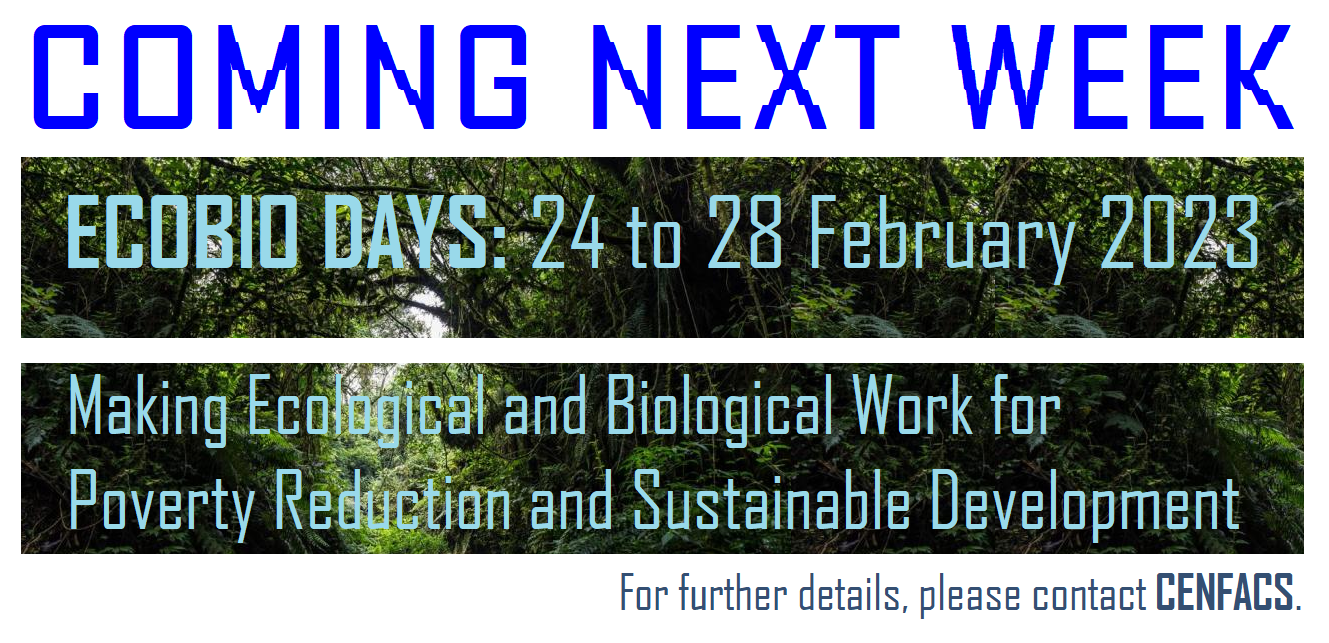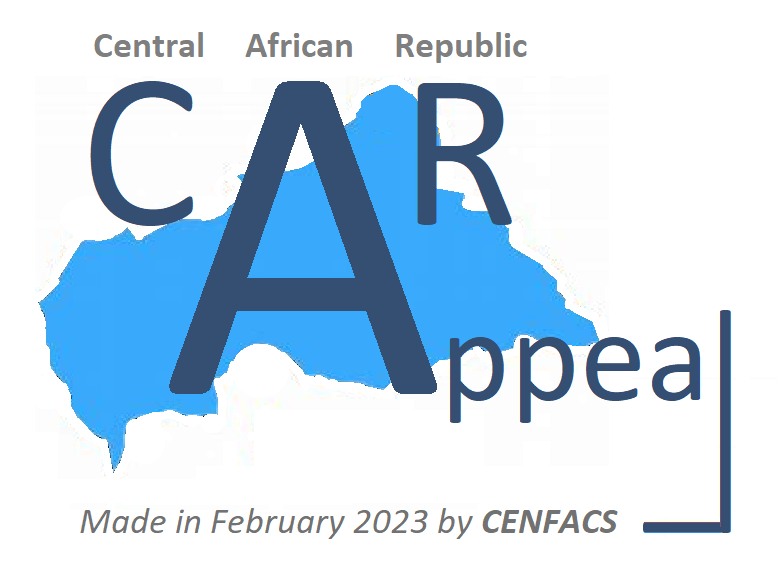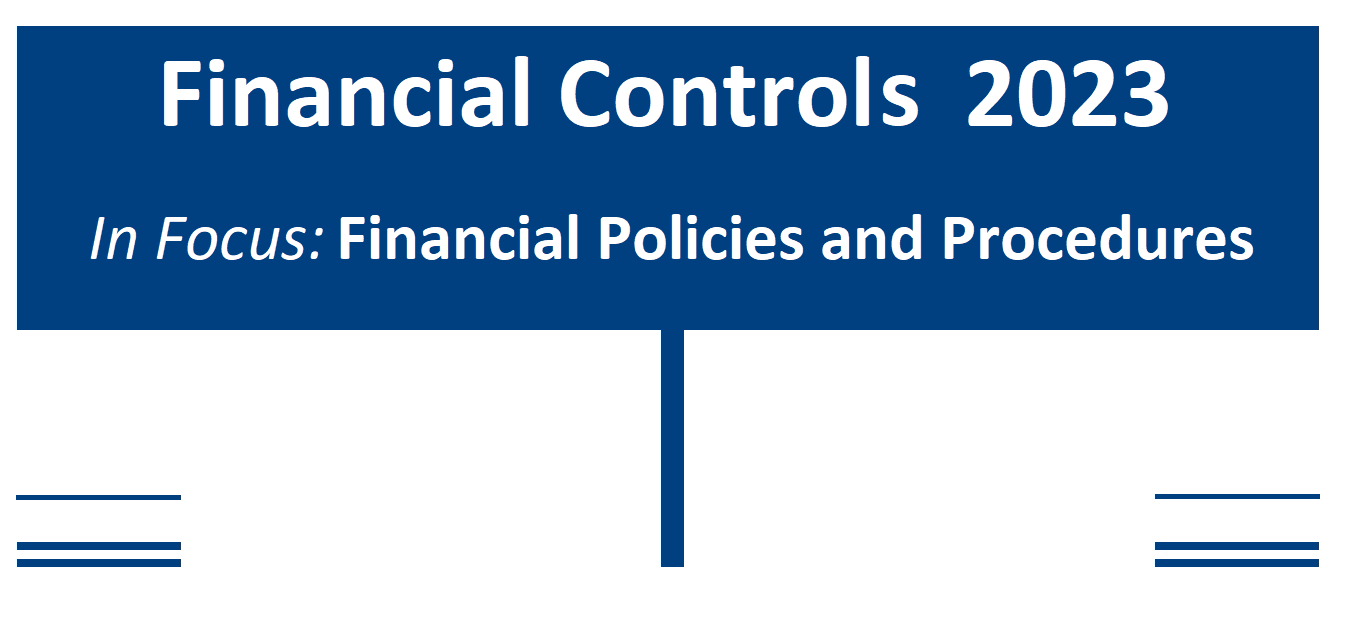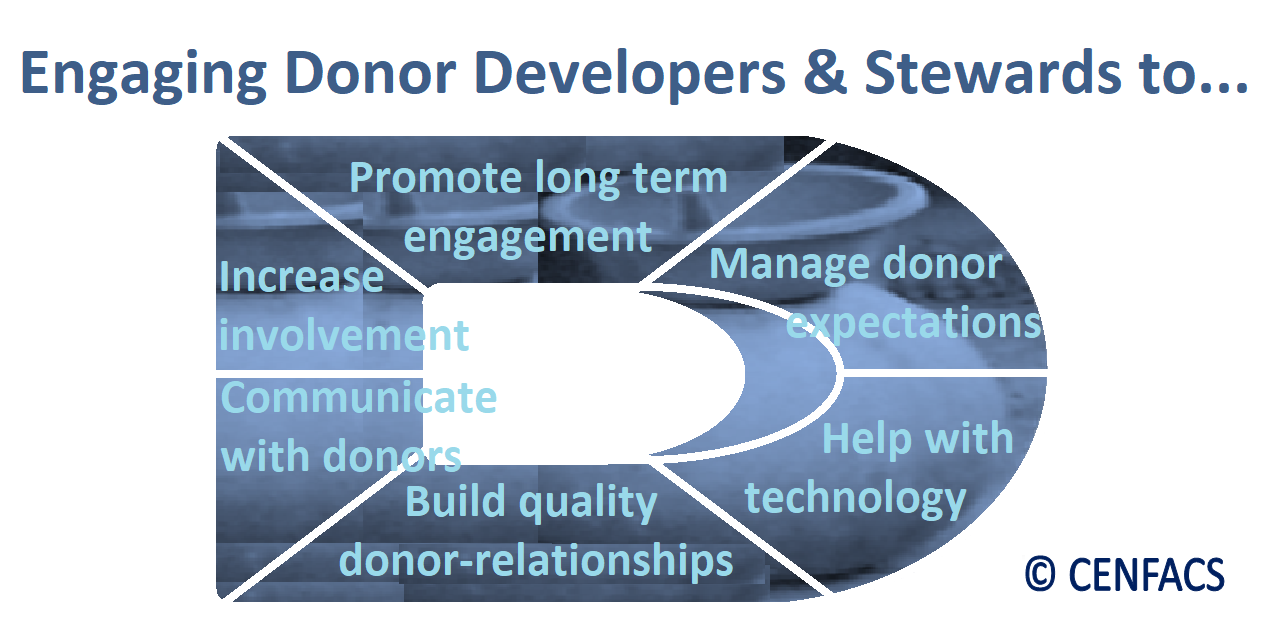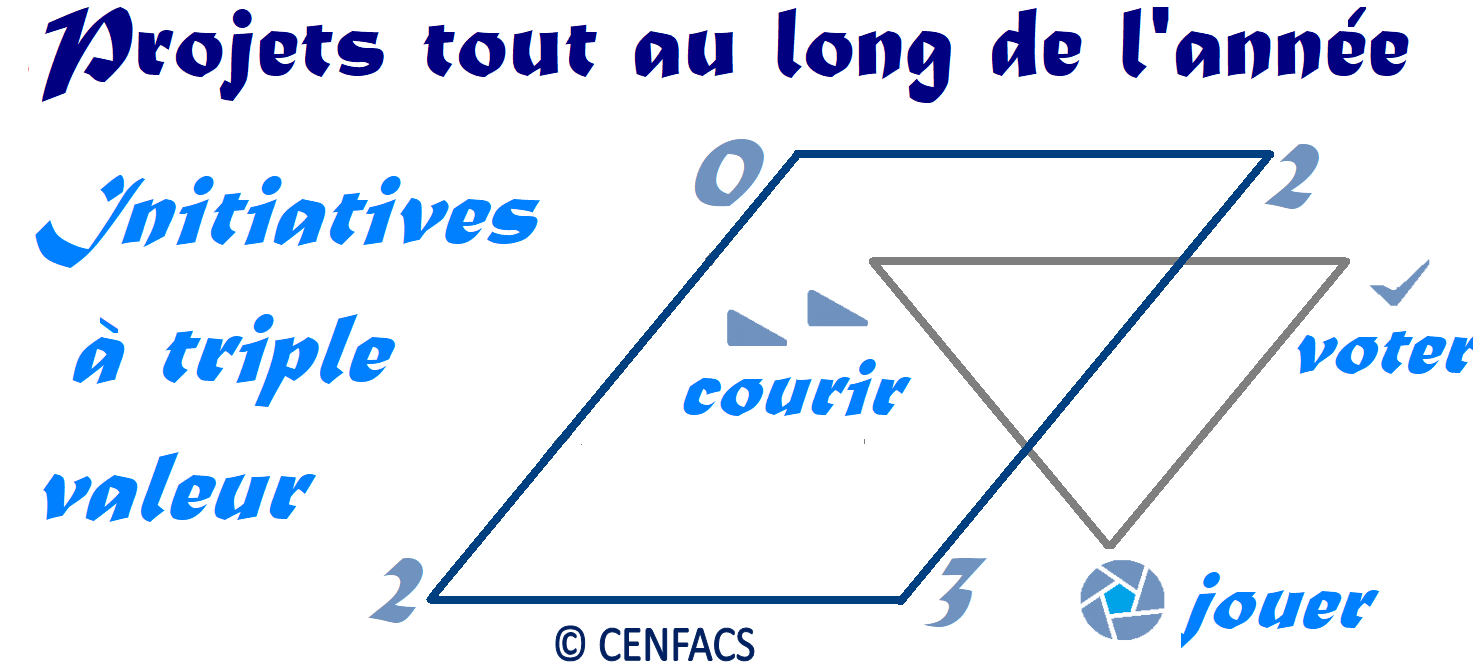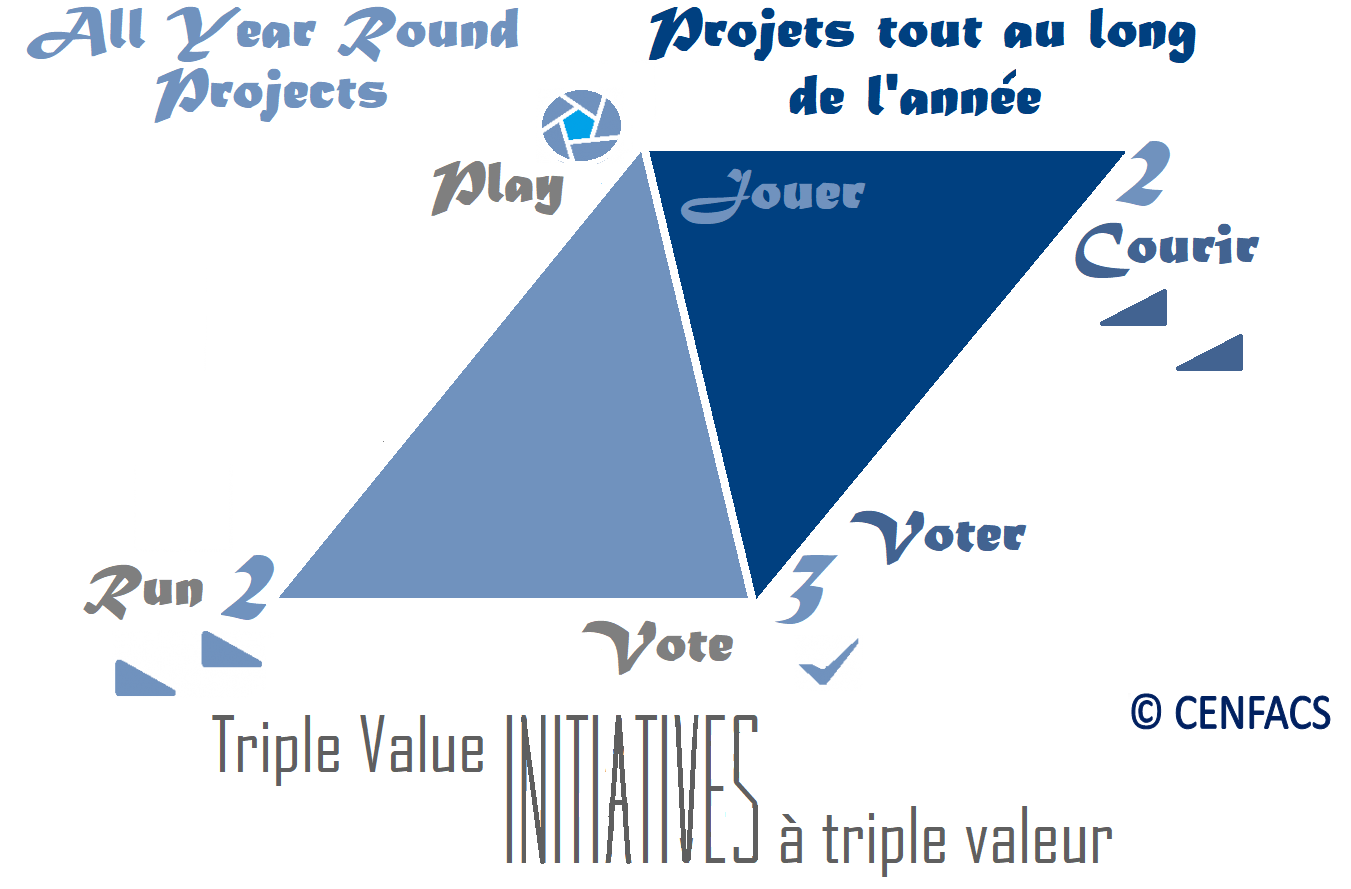Welcome to CENFACS’ Online Diary!
15 February 2023
Post No. 287
The Week’s Contents
• Recovery of Stolen Assets to Support Poor Households
• The People of Central African Republic Need your Influence to Stop the Worsening Humanitarian Crisis they are Experiencing
• Financial Controls 2023 for Households – In Focus: Financial Policies and Procedures
… And much more!
Key Messages
• Recovery of Stolen Assets to Support Poor Households
Our Month of Sustainable Development continues with the Recovery of Stolen Assets to Support Poor Households.
Assets, whether public or private, can be taken away from where or those they belong to without permission or legal right. This can happen in many circumstances of life and times of history at different levels (such as personal, community, local and country/national levels).
For example, during the 2011 London riots, assets were stolen from their owners or taken away from where they belong to without permission or legal right. Assets could also be stolen during a particular historical process like colonial expeditions. Likewise, during armed conflicts or insecurity assets can as well be stolen (like in many parts of Africa where there have been conflicts).
Life events can sometimes lead to the recovery of stolen assets. However, the recovery of the proceeds and instrumentalities of crime relating to stolen assets can be a complex process as it requires legal route and proceedings as well as other elements (like international cooperation).
In this recovery process, what we are focussing on is not the legal side of stolen assets. We are instead looking at the poverty-reduction aspect that the recovery of stolen assets can bring to those in need, particularly but not exclusively poor households. We are as well putting emphasis on the diversion of public funds or assets to the pockets of private individuals or private bank accounts, and how this diversion can deny to the poor the possibility to reduce poverty and enhance sustainable development. In this respect, we are not dealing with other types of stolen funds or their recovery.
So, our Month of Sustainable Development is focussing this week on how illicitly-acquired or -obtained assets that have been recovered can be part of the resources needed to reduce poverty. This focus is carried out with in mind the spirit of Goal 16 and Target 4 of the United Nations Sustainable Development Goals.
More on this week’s focus can be found under the Main Development section of this post.
• The People of Central African Republic Need your Influence to Stop the Worsening Humanitarian Crisis they are Experiencing
The humanitarian crisis in the Central African Republic (CAR) continues to deteriorate, according to the humanitarian community. Because of this deterioration, the Central Africans (or the People of Central African Republic) who are bearing the brunt of this crisis need your Positive Influence to end their suffering. The following summarises their appeal for Positive Influence.
• • Why they Need your Positive Influence
Data from many development agencies and the evidence on the grounds from local sources suggest that the intensity and urgency of humanitarian needs required to be relied soon than later in CAR.
For example, the World Bank (1) in its Food Security Update argues that
“CAR is amongst the countries with the greatest prevalence of insufficient food consumption in order of severity of 1.7 million people of the total affected population” (p. 14)
According to to the ‘reliefweb.int’ (2),
“One in five (1/5) Central Africans move in and out their country because of the insecurity;
3.4 million people (i.e. 56 per cent of the population) need humanitarian assistance and protection”.
The Food and Agriculture Organisation of the United Nations (3) states that
“The number of people in Integrated Food Security Phase 3 (crisis) and above is estimated at 2.7 million between September 2022 and March 2023. This is mainly due to the impact civil insecurity and high food prices, as well as floods that caused people displacements, damaged standing crops and prevented access to fields” (p. 2)
The World health statistics 2022 published by World Health Organisation (4) reveals that
“Prevalence of stunting in children under 5 in comparable estimates in 2020 was 40.1%, while prevalence of wasting in children under in primary data was 53% between 2012 and 2020” (p. 114)
The above data reveals the scale of humanitarian crisis that the Central Africans are facing. Although the figures provided by the World Health Organisation are between 2012 and 2020, they nevertheless provide some indication about the state of children in CAR which experienced many years of insecurity and civil violence. This why the Central Africans need your Positive Influence.
• • What your Positive Influence can Achieve for them
Your Positive Influence can help
√ To support the country’s 2023 Humanitarian Response Plan which has been recently launched
√ To stop violations and abuses of human rights and international humanitarian law
√ To encourage the return of displaced persons
√ To end gender-based violence (e.g. violence against young girls)
√ To enhance the implementation of life-saving responses
√ Briefly, to alleviate the suffering of the vulnerable and humanitarian crisis-impacted Central Africans.
• • Who your Positive Influence will Benefit
The beneficiaries of your Positive Influence or Influencing Donation will be
√ Those who bearing the brunt of this continuing humanitarian crisis
√ Those experiencing the life-threatening effects of violence and insecurity
√ Those without or with limited access to basic services such as water, sanitation and hygiene
√ Those who are victims of gender-violence such as young girls
√ Those suffering from increased vulnerability and eroded livelihoods
√ The displaced Central Africans because of insecurity and threats to their lives
Etc.
You can donate your Positive Influence to reduce poverty in CAR.
To donate, please contact influential persons (or those having the keys) to reduce or solve the life-threatening effects from the continuing humanitarian crisis that the Central Africans are suffering from and make these influential persons reduce or end these damaging effects on them.
You can as well influence the things or factors that play in the continuity of this humanitarian crisis in order to create lasting favourable conditions for a return to life normality.
Please also let CENFACS know about your influencing work or contribution you are or will be making and its outcomes on behalf of the people of Central African Republic.
To let us know, you can contact CENFACS as follows:
*over phone
*via email
*through text
*by filling the contact form on this site.
On receipt of the outcome of your influencing donation, CENFACS will contact you for record and thank you for any influencing donation made. However, should you wish your influencing support to remain anonymous; we will respect your wish.
Thank you in anticipation for your willingness to give your Positive Influence to alleviate the suffering that the Central Africans are facing from the worsening humanitarian crisis.
• Financial Controls 2023 for Households – In Focus: Financial Policies and Procedures
As explained in our previous posts, Financial Controls are conducted with Financial Stability Campaign. During our previous work on Financial Controls with households, we focussed on Year-in-review Accounts as they are part of Financial Controls project or exercise, which also includes income boost and other financial tools making our Campaign to reduce and end poverty, particularly income poverty.
To continue Financial Controls, we are working on Financial Policies and Procedures that any households making the CENFACS Community could consider. What are financial policies and procedures for households and what they do them?
• • Financial policies and procedures and their use for households
Financial policies are a set of principles on which households can base their financial decisions. For example, they can have a financial policy or principle regarding a birthday or clothing budget.
Financial procedures are method and order they would like to follow to apply these policies. For example, they can decide to wait until the sale start to buy some items (like clothing) or buy them whenever they need them within their budget constraint.
Financial policies and procedures can help households to achieve their financial wellbeing and goals by:
σ Ensuring that resources are well used and accounted for
σ Explaining expenses in terms of allowability, allocability, reasonableness and benefit to the members of household
σ Defining how to perform financial control procedures (e.g. by household financial controller or use the automated process for household financial system, etc.)
σ Determining financial control responsibilities and capacities in the financial process
σ Deciding authority within households to perform a financial process control procedure
Etc.
In brief, policies and procedures are there for households to prevent financial and human errors, jus as to avoid non-compliance in a financial process. However, financial control should not become coercive control through policies and procedures set up. This is because within households, there are also social and family relations (especially for those households with children) not only financial transactions. One may need to be careful in the way they approach their financial policies and procedures to achieve their household general wellbeing which also includes financial health.
Additionally, it is not enough to have financial policies and procedures that nobody follows or looks at. It is better to apply them if one wants to keep their finances under control, especially during this challenging time of the cost-of-living crisis.
• • Working with users on matters relating to financial policies and procedures
We are prepared to work with some of our users who would like to set up and or develop financial policies and procedures for themselves or households. These policies and procedures could be set up and developed in any format (e.g., online, paper, verbal, etc.) as long as one understand what they mean by financial policies and procedures and willing to apply them. We shall as well share resources and examples of financial policies and procedures relating to households with those who may be interested in.
Need support regarding your financial controls and in particular financial policies and procedures for your household, please do not hesitate to contact CENFACS.
Extra Messages
• Project Planning Service for the Users of Triple Value Initiatives (or All Year-round Projects)
• Digital and Social Media Campaign – Level 6
• Engaging Donor Developers and Stewards of Poverty Reduction
• Project Planning Service for the Users of Triple Value Initiatives (or All Year-round Projects)
Following last week’s announcement regarding the start-up of Triple Value Initiatives (made of Run, Play and Vote projects), our project planning service is now available for those who would like to engage with either of these projects.
Project planning will include the different steps of project cycle (as show in the All-year Round Projects Cycle below), which are: Identification, preparation, feasibility study, appraisal, negotiations and agreement, start, implementation, monitoring, reviews, termination, evaluation and impact evaluation.
These steps will be approached in a simple and practical way to make everybody (especially those members of our community who are not familiar with them) to understand what they mean and how to use them in the context of Triple Value Initiatives.
For those who are interested in this service, they can contact CENFACS by phoning, texting, e-mailing and completing the contact form on this website. We can together discuss in detail your/their proposals about either your/their Run or Play or Vote projects.
• Digital and Social Media Campaign – Level 6
This level is made of two sub-levels as follows.
Level 6.1: Data Insights
We are still at the level 6 of our Digital and Social Media Campaign. At the beginning of January 2023, we highlighted level 6.1 of our campaign which is Data Insights. However, insights are not only about data. They can also be about content which can include data.
Level 6.2: Content Insights
We are dealing with content life cycle so that the beneficiaries of this campaign properly understand this cycle and put it in the context of their life or household. This may require to know content ideation, development and distribution as well as the way it is marketed to them.
After analysing the content to get the insight of it, beneficiaries can take action regarding their life. To do that, they may need to possess some skills like analytical and numerical skills, content analysis techniques, literacy skills, reporting skills, the skills to guess what the content is telling them, etc. However, to conduct content analysis, some data and digital skills are needed as well.
Briefly, knowing to deal with contents can provide opportunity to better understand household life and to address problems encountered. It also helps to have a pro-active approach and take actionable drive in their decision making process. This is whether it is about scripted or unscripted content, structured or unstructured one.
For those members of our community who would like to enquire or work with us through Content Insights, they are welcome to contact CENFACS.
• Engaging Donor Developers and Stewards of Poverty Reduction
As part of our Donor Development and Stewardship Programme, we are going to communicate with potential donor developers and stewards of poverty reduction in the last two days of this month of February 2023 (27 & 28 February 2023).
Our communication will be to re-explain what we do and answer questions they may raise. The occasion will also be to explore the profile of donor developers and stewards of poverty reduction, the reasons that motivate them to take donor development and stewardship drive as well as their general attitude towards what donor developers and stewards of poverty reduction do as work.
For those who may be interested in this communication, they can contact us on these days.
Message in French (Message en français)
• Service de planification de projet pour les utilisateurs d’initiatives à triple valeur (ou Projets tout au long de l’année)
Suite à l’annonce de la semaine dernière concernant le démarrage d’initiatives à triple valeur (composées de projets Courir, jouer et voter), notre service de planification de projet est maintenant disponible pour ceux/celles qui souhaitent s’engager dans l’un ou l’autre de ces projets.
La planification du projet comprendra les différentes étapes du cycle du projet, à savoir: identification, préparation, étude de faisabilité, évaluation, négociation et accord, démarrage, mise en œuvre, suivi, examens, clôture, évaluation et évaluation d’impact.
Ces étapes seront abordées de manière simple et pratique pour que tout le monde (en particulier les membres de notre communauté qui ne les connaissent pas) comprenne ce qu’elles signifient et comment les utiliser dans le contexte des initiatives à triple valeur.
Pour ceux/celles qui sont intéressé(e)s par ce service, ils/elles peuvent contacter le CENFACS en téléphonant, en envoyant des SMS, des e-mails et en remplissant le formulaire de contact sur ce site. Nous pouvons discuter ensemble en détail de vos/leurs propositions concernant vos/leurs projets Courir, jouer et voter.
Main Development
• Recovery of Stolen Assets to Support Poor Households
The following items make the Recovery of Stolen Assets to Support Poor Households, which is the third note of our Sustainable Development Month:
σ Key Concepts of the Note 3
σ The Recovery Process of Stolen Assets
σ How the Recovery of Stolen Assets can Support Poor Households
σ Intergenerational Transfer of Stolen Assets and Intergenerational Poverty
σ Ways of Working with the Community and Africa-based Sister Organisations on Asset Recovery.
Let us briefly explain each of these items indicating the pitch of the Note 3.
• • Key Concepts of the Note 3
There are three concepts that shape Note 3, which are: stolen assets, proceeds of crime and asset recovery.
a) Stolen Assets
To understand stolen assets, it is better to first clarify the meaning of assets. Our working definition of assets comes from Jean-Pierre Brun et al. (5) who explain them as
“Assets of every kind, whether corporeal or incorporeal, movable or immovable, tangible or intangible and legal documents or instruments evidencing title to or interest in such assets. The term is used interchangeably with property” (p. 325)
Assets, whether public or private, can be taken away from where or those they belong to without permission or legal right. When they are taken away in this way, they become stolen assets.
b) Proceeds of Crime
Jean-Pierre Brun et al. (op. cit.) also define the proceeds of crime as
“Any asset derived from or obtained, directly or indirectly, through the commission of an offense” (p. 328)
This definition will help to understand some of the hurdles in asset recovery.
c) Asset Recovery
The meaning of asset recovery used in the Note 3 stems from what ‘transparency.org’ (6) states on its website, which is
“Asset recovery is the process of reclaiming and returning these stolen proceeds to the country from which they were taken. The process includes tracing, freezing, confiscating and repatriating the stolen assets and is usually complex and lengthy, involving multiple jurisdictions”.
The above key concepts will contribute to the understanding of the recovery process of stolen assets.
• • The Recovery Process of Stolen Assets
The process of recovering stolen assets includes collecting intelligence and evidence and tracing assets, securing the assets, court process, enforcing orders and return of assets. In this process, one needs to differentiate whether or not legal actions initiated by foreign jurisdictions will be involved.
This process can be long or short, complex or simple depending on the cases. Because of that, the link between asset recovery and the possibility of supporting those in need through repatriated funds could be uncertain or random, especially when those needs are urgent and pressing. However, one can still have hope this link may happen.
• • How the Recovery of Stolen Assets can Support Poor Households
It is possible to use recovered stolen assets to support those living in poverty, and amongst them are poor households despite the uncertainty described above. However, there could be a challenge to do it. For example, Gomes Pereira et al. (7) in their research paper on ‘The role of donors in the recovery of stolen assets’ argue that
“Asset recovery is [also] an essential development challenge, as it usually involves repatriating funds back to a developing country where they were stolen, and where they could be used to support development projects”.
Challenge does not mean that asset recovery cannot be done. It can be and if it succeeds, the recuperated and repatriated funds can be used for development purposes including supporting poor households.
Likewise, writing on the use of recovered assets on poverty, ‘transparency.org’ (8) argues that
“Little information can be found on systematic efforts to collect data and measure the effectiveness of repatriate funds in reducing poverty in the countries of origin” (p. 3)
The same ‘transparenccy.org’ concludes that
“Effective monitoring mechanisms are needed at all levels – from disbursement of resources to implementation – of development projects” (p. 5)
From what ‘transparency.org’ argues about, it is mundane to say there are cases that succeeded; just as there will be cases that may succeed.
• • Intergenerational Transfer of Stolen Assets and Intergenerational Poverty
Stolen assets can be passed to other generations without sometimes these generations knowing they are inheriting stolen assets. This transfer can make the reduction of poverty harder if these assets could have been part of poverty reduction process. The transfer can as well create or exacerbate intergenerational poverty for others. In other words, one could argue that those who are poor from where assets were stolen may not be poor if these assets were not stolen.
So, reducing and recovering stolen assets can help decrease the intergenerational transfer of stolen assets as well as the transfer of poverty to other generations in the opposite direction. To make this reduction and recovery to happen, it may require working together between where stolen assets come from and where they have been sent to.
• • Ways of Working with the Community and Africa-based Sister Organisations (ASOs) on Asset Recovery
There is a number of ways by which CENFACS can work with the community and Africa-based Sister Organisations on Asset Recovery.
• • • Working with the Community on Asset Recovery
Together with the community we can impact the Recovery of Stolen Assets can Support Poor Households by these ways:
√ Explaining asset recovery policy
√ Informing and directing users to services dealing with stolen assets recovery
√ Helping in data collection regarding stolen asset recovery
√ Communicating information about stolen asset recovery
√ Participating in studies (e.g., survey, focus group discussion, etc.) relating to stolen assets recovery
√ Sharing under the General Data Protection Act non sensitive information about stolen asset recovery actions and results
Etc.
• • • Working with ASOs on Asset Recovery
CENFACS can as well work with ASOs dealing with Recovery of Stolen Assets to Support their Poor Households by:
√ Supporting asset recovery initiatives run by ASOs
√ Sharing online platforms to discuss matters relating to stolen assets recovery
√ Help ASOs dealing with stolen assets recovery to access technical assistance and capacity building on stolen assets recovery
√ Providing assistance during the asset repatriation process/phase
√ Advocating for a portion of repatriated funds to be allocated to poverty reduction, particularly but not exclusively to poor households
Etc.
To sum up, the diversion of public funds in the form of illicitly-acquired or -obtained assets can subtract a lump sum of money from where they are taken; money that could have been used to reduce or even end poverty. This diversion can create or exacerbate poverty for those who are poor and amongst them are poor households. Reclaiming and returning these stolen proceeds to the country from which they were taken is a just cause to pursue if these returned funds can contribute to development efforts, including to poverty reduction.
For those members of our community who may be interested in matter relating to Recovery of Stolen Assets to Support their Poor Households, they are free to contact CENFACS. For those Africa-based Sister Organisations that are willing to collaborate with us on the matter, they can let CENFACS know.
For any other queries or enquiries about Sustainable Development Month and the Recovery of Stolen Assets to Support their Poor Households, please also contact CENFACS.
_________
• References
(1) World Bank (2023), Food Security Update, World Bank Publications, Washington (www.worldbank.org)
(2) https://reliefweb.int/report/central-african-republic/central-african-republic-us465-million-required-address-ever-growing-humanitarian-needs-2023 (Accessed in February 2023)
(3) FAO (2022), Crop Prospects and Food Situation – Quarterly Global Report No. 4, Dec. 2022, Rome (https://doi.org/10.4060/cc3233en (Accessed in February 2023)
(4) World Health Statistics (2022): Monitoring health for the SDGs, Sustainable Development Goals, Geneva, World Health Organisation; 2022, Licence: CCBY-NC-SA3.OIGO
(5) Brun, J. P., Sotiropoulou, A., Gray, L., Scott, C. & Stephenson, K. M. (2021), Asset Recovery Handbook: A Guide for Practitioners, Second Edition, Stolen Asset Recovery Initiative, World Bank, UNODC
(6) https://www.transparency.org/en/our-priorities/asset-recovery-and-the-theft-of-public-money# (Accessed in February 2023)
(7) https://www.gov.uk/research-for-development-outputs/the-role-of-donors-in-the-recovery-of-stolen-assets (Accessed in February 2023)
(8) https://www.transparency.org/files/content/corruptionqas/230_impact_of_asset_recording_recovery_and_money_laundering_on_poverty_reduction.pdf (Accessed in February 2023)
_________
• Help CENFACS keep the Poverty Relief work going this year
We do our work on a very small budget and on a voluntary basis. Making a donation will show us you value our work and support CENFACS’ work, which is currently offered as a free service.
One could also consider a recurring donation to CENFACS in the future.
Additionally, we would like to inform you that planned gifting is always an option for giving at CENFACS. Likewise, CENFACS accepts matching gifts from companies running a gift-matching programme.
Donate to support CENFACS!
FOR ONLY £1, YOU CAN SUPPORT CENFACS AND CENFACS’ NOBLE CAUSES OF POVERTY REDUCTION.
JUST GO TO: Support Causes – (cenfacs.org.uk)
Thank you for visiting CENFACS website and reading this post.
Thank you as well to those who made or make comments about our weekly posts.
We look forward to receiving your regular visits and continuing support in 2023 and beyond.
With many thanks.

